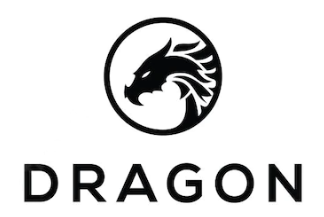Embracing the Digital Art Revolution: A Comprehensive Guide
Table of Contents
The digital art revolution is transforming the way we perceive and interact with art. From the use of cutting-edge technologies to the integration of blockchain, this guide explores the key aspects that define the digital art landscape today.
The Evolution of Digital Art: Tracing the Journey from Pixels to NFTs
The journey of digital art can be traced back to the early days of computer graphics, where artists used pixels as their primary medium. Over time, the advancement of technology led to the development of sophisticated digital tools and techniques that allowed artists to create intricate, visually stunning works.
The Birth of New Media Art: Exploring the Intersection of Art and Technology
As technology continued to evolve, the concept of new media art emerged. This form of artistic expression combines traditional art practices with digital and interactive technologies, opening up new avenues for artistic exploration.
The Rise of NFTs: A Game-Changer for the Art World
The introduction of non-fungible tokens (NFTs) has been a game-changer for the digital art world, enabling artists to monetize their work and gain recognition in ways never before possible.
Understanding NFTs: Unlocking the Value of Digital Art
NFTs are unique digital assets that can represent various forms of digital art, including images, videos, and audio files. They are stored on a blockchain, ensuring the provenance, ownership, and authenticity of the digital artwork.
The Role of Blockchain in Digital Art: Democratizing Art Ownership
Blockchain technology has played a crucial role in the digital art revolution, democratizing art ownership and empowering artists to retain control over their creations.
The Benefits of Blockchain for Digital Art
The decentralized nature of blockchain technology provides numerous benefits for digital art, including:
- Verifiable provenance and ownership
- Secure storage and transfer of digital assets
- Elimination of intermediaries, such as galleries and auction houses
- Royalties for artists on secondary sales
Digital Art Marketplaces: Platforms for Buying, Selling, and Showcasing Digital Art
A wide variety of digital art marketplaces have emerged, providing platforms for artists to showcase, sell, and buy digital art. These marketplaces cater to different types of digital art and offer various features and functionalities to enhance the user experience.
Top Digital Art Marketplaces to Explore
Some of the most popular digital art marketplaces include:
- SuperRare
- Foundation
- Rarible
- OpenSea
- Nifty Gateway
The Future of Digital Art: What to Expect
The digital art landscape continues to evolve, presenting new opportunities and challenges for artists and collectors alike. As technology advances and the digital art market matures, we can expect:
- The adoption of virtual and augmented reality in digital art experiences
- Greater integration of artificial intelligence and machine learning in the creation and curation of digital art
- The emergence of new digital art forms and genres
- Increased collaboration between artists and technologists
- The continued growth and mainstream acceptance of NFTs and digital art
Conclusion: Embracing the Digital Art Revolution
The digital art revolution is transforming the way we create, consume, and value art. As artists continue to push the boundaries of digital art and leverage the power of technology, the possibilities for this dynamic and rapidly evolving field are truly boundless. By embracing the digital art revolution, we can all play a part in shaping the future of art and culture.
Collecting Digital Art: Tips for Aspiring Collectors
As digital art becomes increasingly popular, many people are interested in starting their own collections. Here are some tips for aspiring collectors to help them navigate the digital art world and make informed decisions.
1. Do Your Research
Take the time to learn about different digital art genres, styles, and artists. Familiarize yourself with the various marketplaces and platforms available for buying and selling digital art. By gaining a thorough understanding of the digital art landscape, you’ll be better equipped to make informed decisions when acquiring new pieces.
2. Set a Budget
As with any investment or collection, it’s essential to set a budget for your digital art collection. Determine how much you’re willing to spend on individual pieces and establish a total budget for your collection. This will help ensure that you make smart decisions and avoid overspending.
3. Develop a Curatorial Vision
As you begin collecting digital art, consider the themes, styles, and artists that resonate with you. Developing a curatorial vision will help guide your acquisition choices and ensure that your collection is cohesive and meaningful.
4. Verify Authenticity and Provenance
When acquiring digital art, it’s crucial to verify the authenticity and provenance of the pieces you’re considering. Blockchain technology has made this process more accessible, but it’s essential to do your due diligence to ensure you’re buying legitimate works from reputable sources.
5. Engage with the Digital Art Community
The digital art community is a vibrant and diverse space filled with artists, collectors, and enthusiasts. Engage with this community by attending virtual events, joining online forums, and following influential artists and collectors on social media. Networking within the digital art community can help you discover new artists, learn about upcoming releases, and gain valuable insights from experienced collectors.
The Social Impact of Digital Art: Empowering Artists and Fostering Diversity
The digital art revolution is not only reshaping the art world but also creating new opportunities for artists and fostering diversity within the creative community.
Supporting Emerging Artists
Digital art platforms and marketplaces have opened up new channels for emerging artists to showcase and monetize their work. By supporting these artists, collectors can help them gain recognition and develop sustainable careers in the art world.
Promoting Diversity and Inclusivity
The digital art landscape has created an environment where artists from diverse backgrounds can thrive. By supporting and collecting works from underrepresented artists, collectors can contribute to the growth of a more inclusive and diverse art world.
The Power of Digital Art: Igniting Creativity and Connecting Communities
The digital art revolution is a testament to the transformative power of technology and its ability to ignite creativity and connect communities across the globe. By embracing the digital art movement, we can foster a more inclusive, diverse, and accessible art world, inspiring new generations of artists and collectors to redefine the boundaries of artistic expression.
- The Ultimate Guide to the Top NFT Animation Artists in 2023 19 April 2023
- The Meteoric Rise of the Israeli NFT Art Scene 19 April 2023
- A Deep Dive into the Adult Fantasy NFT Project 19 April 2023


